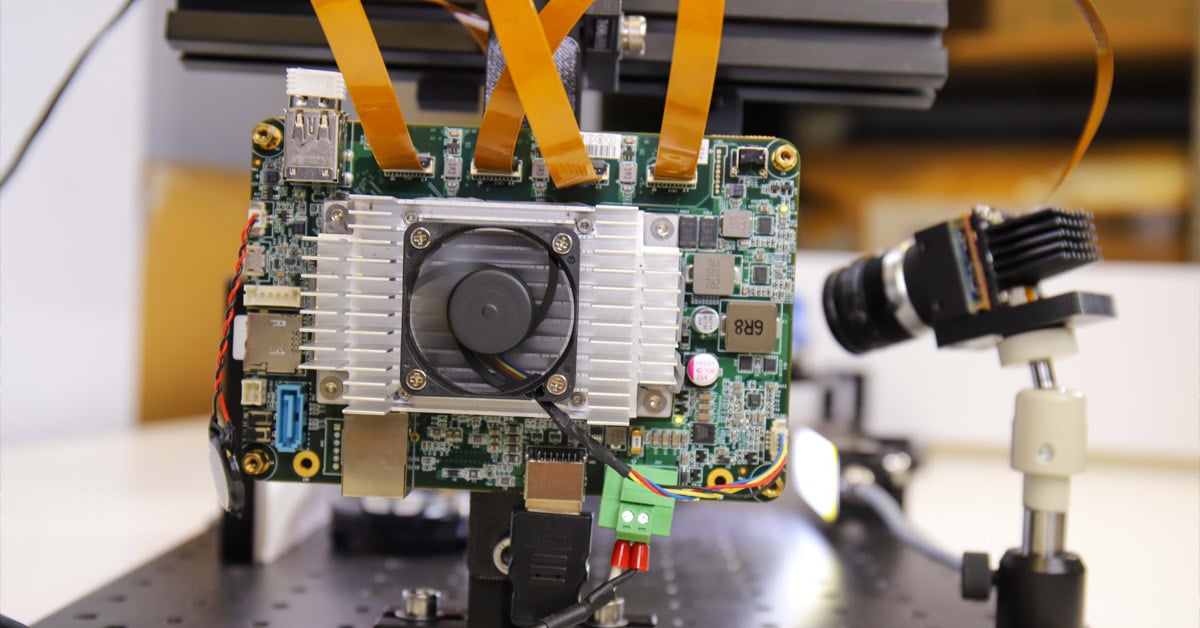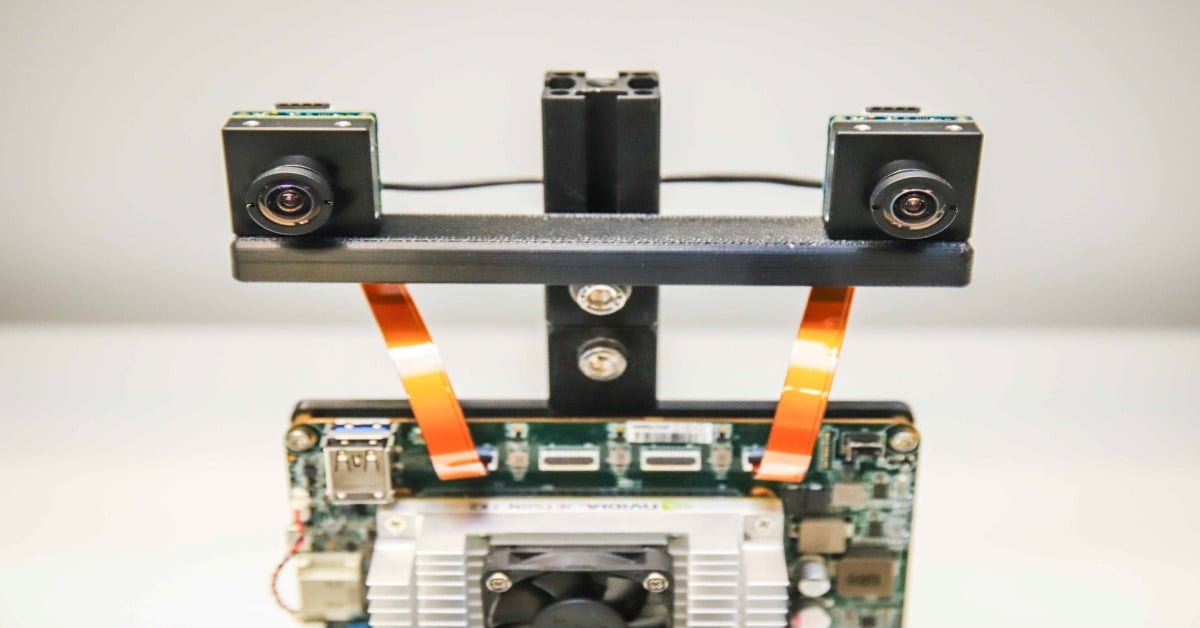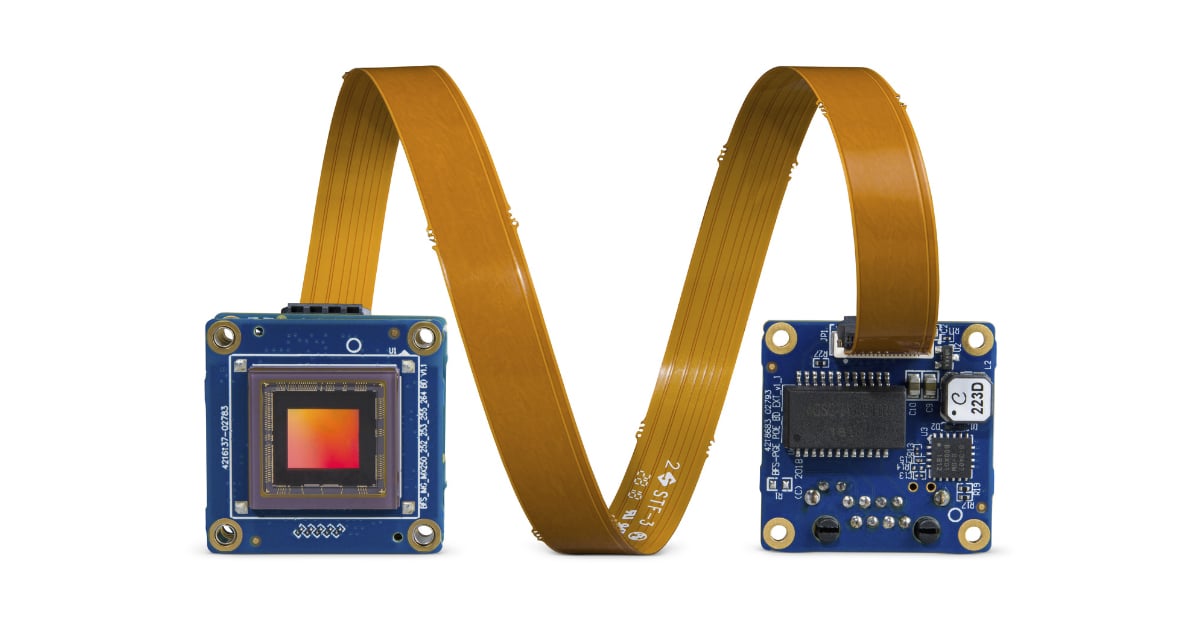Revolutionary video processing system detects, amplifies, and measures subtle motion
Revolutionary video processing system to detect, amplify, and measure subtle motion
Engineers at RDI Technologies (Knoxville, TN, USA) have developed a revolutionary non-contact video processing system called Iris M that employs a camera from FLIR (formerly Point Grey) to detect, amplify, and measure the subtle vibrations created by machines, eliminating all the drawbacks inherent with the use of earlier techniques.
All machines produce vibrations, some of which may be characteristic of normal operation and others which may indicate initial signs of failure. In the field of predictive maintenance, the detection of vibrational signatures is a key element of the diagnostic process that involves identifying and remedying problems before more serious events occur.
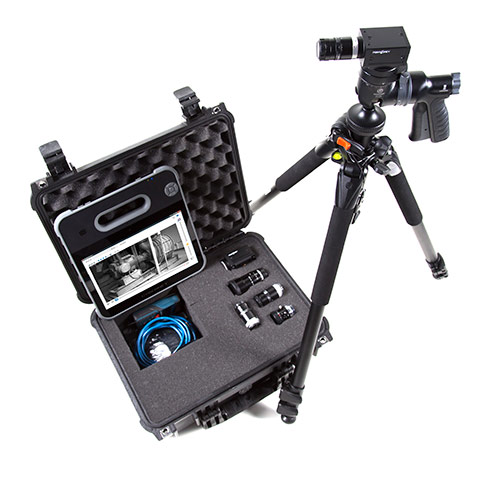
RDI Technologies’ Iris M system employs a Point Grey/FLIR 2.3Mpixel Grasshoppper3 camera mounted on a Vanguard tripod that acquires monochrome image data at a default resolution of 1920 x 1050 and at a speed of 120 frames/sec.
Data from the camera is transferred over a USB 3.0 interface to a tablet PC where it is analyzed using the company’s proprietary software to enable a user to visualize vibrational signatures in plant assets such as machinery.
Traditionally, the process has been performed by deploying wired sensors such as contact accelerometers on machines to monitor the vibrations that are present. Once the data has been acquired from the sensors, an operating deflection shape analysis is then performed on the data to render an animated model of the motion of the machine, thereby enabling vibration patterns to be visualized.
However, according to Dr. Jeff Hay, the founder and CEO of RDI Technologies, the technique does have its drawbacks. Not only is it time consuming to take measurements from more than a few points, it also requires access to the machinery or structures. This generally rules out its use where there is limited or no access to a machine, or where it is located behind barriers or glass. Furthermore, making such contact measurements often requires machinery to be stopped while the accelerometers are fitted, leading to expensive downtime.
Imaging assets
In the Iris M system, the camera acts as the data acquisition device that collects the video imagery from which motion can be extracted and analyzed. The FLIR (formerly Point Grey) 2.3Mpixel Grasshoppper3 GS3-U3-23S6M-C camera, which is mounted on a Vanguard tripod, acquires monochrome image data at a default resolution of 1920 x 1050 and at a speed of 120 frames/sec. Once acquired, data from the camera is transferred over a USB 3.0 interface via screw lock cables to a tablet PC, either a Getac F110 or Microsoft Surface Book.
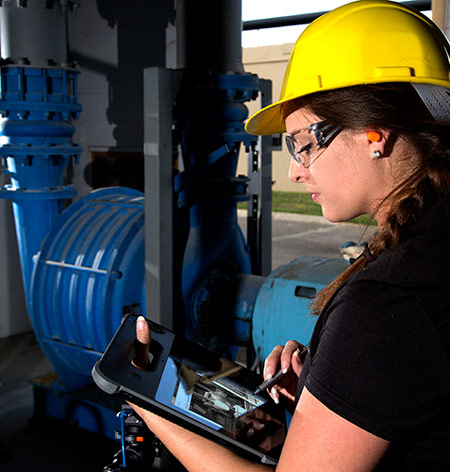
The Iris M system offers the ability to make point measurements of absolute displacement of plant assets directly from images that can be used to quantify that motion, instead of interpreting point measurements to determine the types of motions and faults present.
“A proprietary video processing algorithm called Motion Amplification running on the PC hardware then enables the vibrations of the machine to be visualized. To do so, it analyzes the pixels in each image on a frame by frame basis to determine which parts of the scene are moving. Next, it amplifies the periodic changes in the amplitude of the motion in a scene to a level that is visible with the naked eye. This reveals subtle motions that would be too subtle to seen by the eye alone, enhancing the understanding of the components and interrelationships creating any vibration.” said Dr. Hay.
Through the use of a graphical user interface running on the PC, a user can select numerous parts of the image for further analysis. Having done so, the system software will then display the time-dependent intensity data associated with those regions. Various mathematical functions, such as a Fast Fourier Transform (FFT) can then be employed to convert the set of time-dependent intensity data into frequency-dependent intensity data. The user is then presented with the absolute unamplified amplitude and phase of the vibration at different frequencies for those chosen sections of a scene.
Sensitivity and scalability
Since its launch in Q3 of 2016, the Iris M system itself has revolutionized the way people observe motion in the machine condition monitoring industry. Not only is the system simple to use, it returns easy to understand video imagery that the user can see to get a better understanding of the behavior of equipment.
According to Dr. Hay, the choice of the FLIR Grasshopper camera has been one key reason for the success of the system. The 12-bit dynamic range of the camera enables it to capture small differences in pixel intensity between brightly illuminated and dark regions in the images, enabling the system software to extract more detailed changes than would otherwise be possible.
No less important, however, is the Motion Amplification algorithm itself. “Due to this unique algorithm, the Iris M is about one hundred times more sensitive in measuring displacement than traditional image-based measurement tools. Furthermore, the Iris M offers the ability to make point measurements of absolute displacement directly from the image that can be used to quantify that motion when necessary, instead of having to interpret point measurements to determine the types of motions and faults present.” he said.
The Iris M is about one hundred times more sensitive in measuring displacement than traditional image-based measurement tools
Another major benefit of the technology is the speed at which the data is returned and the level of detail in the data. Unlike traditional contact measurement systems, it is also easily scalable, since the motion of all the assets in the field of view of the camera are measured simultaneously. What is more, it lends itself to being a good communication tool between a technical and non-technical user as the root causes of any issues with any assets can be seen directly in the video.
The new system has been deployed in a variety of practical applications. Aside from performing condition monitoring on industrial assets such as machinery, the Iris M system can also be use to analyze the structural integrity of bridges, buildings, and similar structures. In addition, it could also be used in biomedical monitoring applications for assessing the respiration of an individual.
